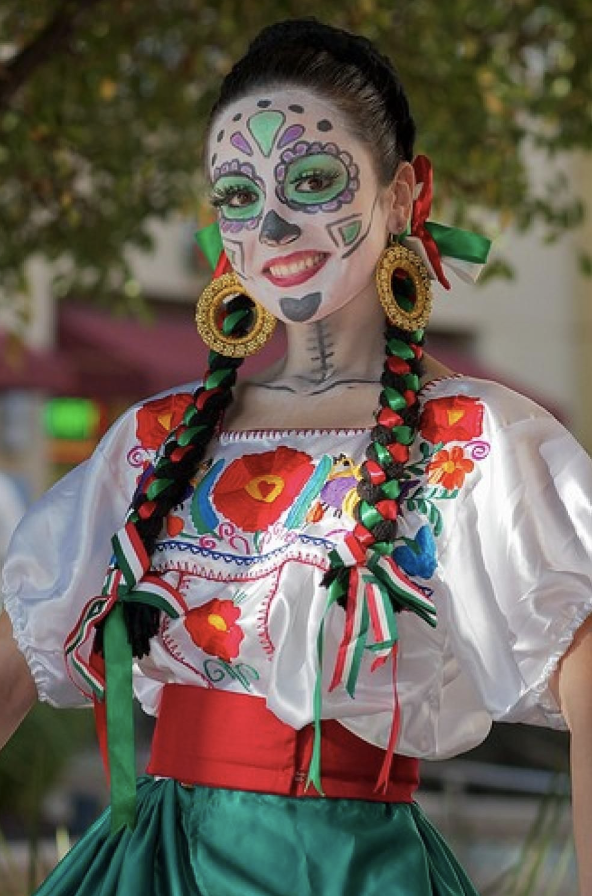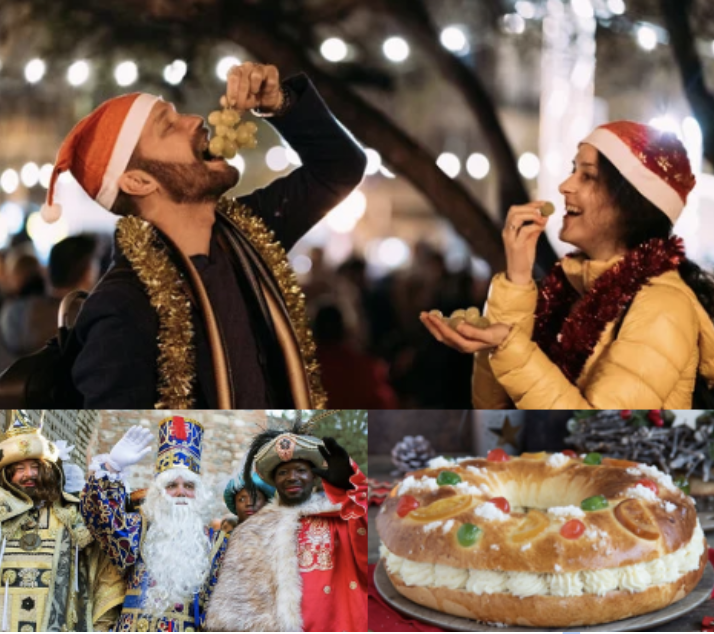By Claire Hines, Year 12
“El Día de los Muertos” or the “Day of the Dead”, celebrated on the 1st and 2nd of November each year, is a traditional Latin American festival where one honours and remembers one’s deceased, and accepts the concept of death by treating it with familiarity through multiple festivities. It is also believed to be an opportunity to reunite with the dead for a few days.
In most ancient polytheistic religions around the world, the deity that represents death and the afterlife holds an important place in their respective mythologies, and is usually a man. Such as Hades for the Ancient Greeks, Osiris in Ancient Egypt, or Odin according to Norse beliefs. The Aztecs, or Culhua-Mexica however, a powerful civilisation who ruled the majority of Mexico until the Spanish conquest under Hernán Cortés in the early 16th century, worshipped Mictlantecuhtli, a Goddess of death. Mictecacihuatl was a very esteemed deity, who was believed to rule over Mictlán, the Aztec underworld, with her spouse Mictlantecuhtli. As the guardian of the afterlife, she guided the souls of the dead to her kingdom and watched over them.
The Aztecs would hold a yearly festival in her honour that lasted a full month and perform multiple rites including the human sacrifice of prisoners of war on top of her temple, where the torn-out heart of the victim would be presented to the sky. Once the Spanish took charge of Mexico, they were immensely shocked with this practice, they therefore found a way to keep the concept of the holiday without the human sacrifice by making its date coincide with “All saints day” (November 1st), and encouraging the Mexican people to celebrate their holiday in alternate ways.
Today, “El Día de los Muertos”, is celebrated by dressing up in the calavera or skeletal image that is associated with Mictecacihuatl, and partaking in various festivities that differ from region to region in South America. In urban environments, parades and parties, which involve much eating and drinking, are attended, but in some rural areas however, the celebration is a lot simpler. Families decorate the graves of their loved ones with candles to light their way, their favourite foods and chrysanthemum flowers, the same type of flower which is traditionally placed in cemeteries on “Toussaint” the French “All saints day”. Finally, the adornment of “ofrendas”, or small alters dedicated to a family’s loved ones set up in the home, covered in photographs of the deceased, is a wide-spread practice and fundamental element of the holiday in South America.
Originally a celebration unheard of outside South America, the holiday steadily gained international repute as its flamboyant costumes and vivacious festivities intrigued and attracted other cultures. El Día de los Muertos has inspired artists such as Lee Unkrich the director of Disney’s “Coco”, a film heavily anchored in this holiday, and Sam Mendes the director of “Spectre”, the fourth Daniel Craig Bond movie whose iconic opening sequence takes place in Mexico City during the holiday.
Furthermore, here in LGB, the holiday is represented in the form of a selection of stands organised by volunteer parents who are happy to share their culture and traditions with the students so as to add to their learning experience and their understanding of other cultures and celebrations.
From its ancient origins to its current standing, podemos decir qué el Día de los Muertos es una celebración muy interesante y inspiradora.



